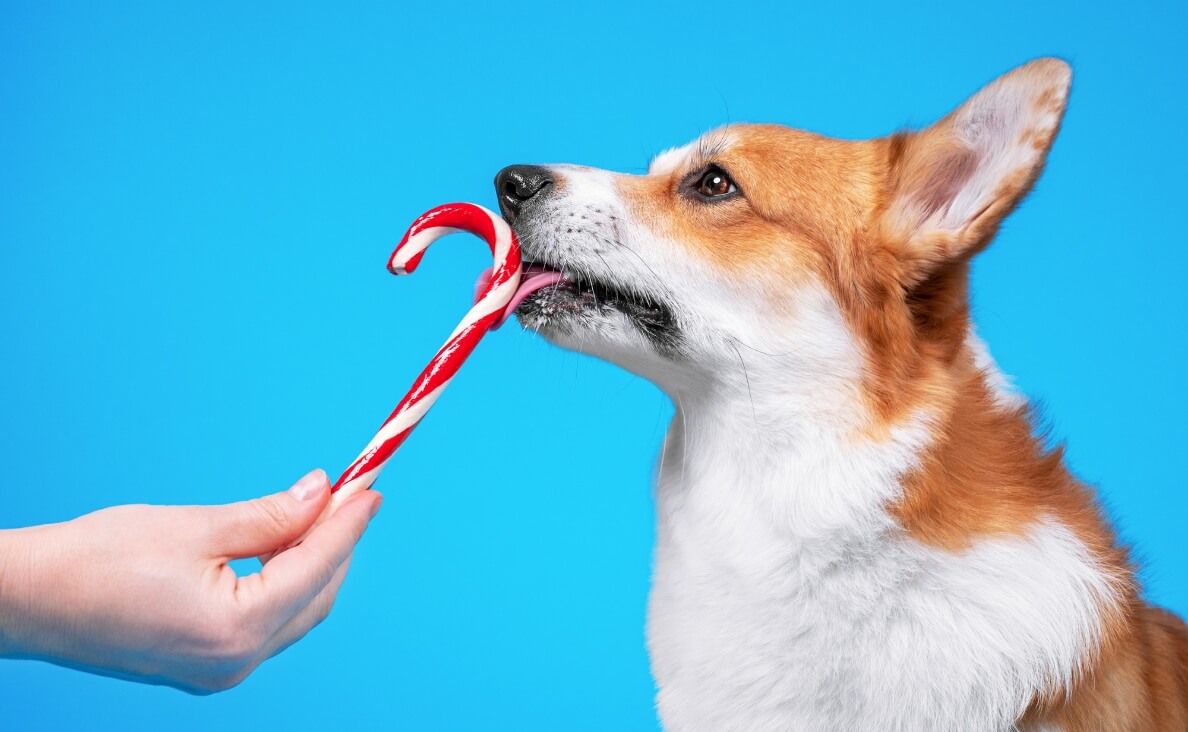
As a responsible dog owner, you may often wonder whether certain human foods or plants are safe for your furry friend. One question that pops up frequently is, “Is peppermint safe for dogs?” With its soothing scent and common use in teas, candies, and natural remedies, it’s only natural for pet owners to be curious about how peppermint affects dogs. In this post, we’ll dive into everything you need to know about peppermint for dogs: its benefits, risks, and how to safely offer it to your dog.
What is Peppermint?
Peppermint, known scientifically as Mentha piperita, is a hybrid mint that is a cross between watermint and spearmint. It’s a popular plant used worldwide for its fresh, cooling taste and scent. Many of us enjoy peppermint in various forms—from peppermint tea to peppermint-flavored candies and even as an ingredient in home remedies for nausea or digestive issues.
Because of its pleasant aroma and common use in human diets, it’s no surprise that many dog owners may wonder, “Is peppermint safe for dogs?” While peppermint is generally safe for humans, we need to consider how it affects our canine companions.
Is Peppermint Safe for Dogs?
Is peppermint safe for dogs? The short answer is yes, in small amounts, peppermint is generally safe for dogs. However, the safety largely depends on the form and quantity in which it’s consumed. Fresh peppermint leaves or a mild peppermint tea can be safe for dogs when given in moderation. But it’s important to be cautious, as excessive peppermint or certain forms, like essential oils, can be harmful.
It’s important to note that not all peppermint products are created equal. While natural peppermint leaves may not be toxic, other peppermint-flavored products—like peppermint gum, candies, or oils—may contain ingredients that can be harmful to dogs. We’ll discuss these risks further in the next sections.

Potential Benefits of Peppermint for Dogs
While peppermint is not necessary for a dog’s diet, it can offer a few benefits when given in controlled, small amounts. Here are some potential ways peppermint can positively affect dogs:
1. Digestive Support
Peppermint is commonly used in humans to alleviate digestive issues such as nausea, gas, and bloating. Similarly, a small amount of peppermint, in the form of fresh leaves or diluted tea, may help ease mild digestive discomfort in dogs. However, it’s important to note that these effects are anecdotal, and not all dogs will respond positively.
Related: Understanding and Managing Dog Food Sensitivities
2. Breath Freshener
Let’s face it: dogs can have bad breath! Some pet owners use peppermint as a natural breath freshener for their dogs. Adding a small amount of fresh peppermint to your dog’s food might help mask bad breath temporarily. But keep in mind, persistent bad breath could be a sign of dental or health issues, so it’s always wise to check with your vet.
Risks and Side Effects of Peppermint for Dogs
While peppermint may have some benefits, there are also risks associated with giving it to dogs. It’s essential to be cautious and avoid giving your dog too much peppermint or unsafe forms of the plant.

1. Allergic Reactions
Just like humans, dogs can have allergic reactions to certain plants and foods, including peppermint. Symptoms of an allergic reaction might include itching, swelling, and difficulty breathing. If you notice any of these symptoms after giving your dog peppermint, stop immediately and contact your veterinarian.
2. Digestive Upset
Although peppermint is sometimes used to soothe digestive issues, too much peppermint can have the opposite effect. Dogs who consume large amounts of peppermint may experience vomiting, diarrhea, or stomach cramps.
3. Essential Oils
One of the most significant risks of peppermint comes from its use in essential oils. Peppermint essential oil is highly concentrated and can be toxic to dogs, leading to symptoms such as lethargy, vomiting, or difficulty breathing. Dogs have a heightened sensitivity to essential oils, and even a small amount can cause harm. Never use peppermint essential oil around your dog or apply it to their skin.
4. Peppermint-Flavored Products
Another major risk comes from peppermint-flavored products like gum, candy, or baked goods. Many of these items contain xylitol, a sweetener that is highly toxic to dogs. Ingesting xylitol can cause a rapid release of insulin, leading to hypoglycemia (low blood sugar), which can be life-threatening. If your dog ingests any peppermint-flavored product, especially one containing xylitol, contact your veterinarian immediately.
Related: The Ultimate Guide to Foods You Can and Can’t Feed Your Dog

How to Safely Give Peppermint to Your Dog
If you’re determined to share a little peppermint with your dog, it’s essential to know the safe ways to do so. Here are some tips for safely introducing peppermint to your dog’s diet:
1. Fresh Peppermint Leaves
The safest way to give your dog peppermint is by offering fresh peppermint leaves in small amounts. You can chop up a few leaves and mix them into their food or offer them as a treat. Remember to start with a small quantity to see how your dog reacts.
2. Peppermint Tea
Diluted, unsweetened peppermint tea is another option. Brew a mild tea using fresh peppermint leaves, let it cool, and offer your dog a small spoonful. This can be especially soothing for dogs with mild stomach discomfort. Always ensure the tea is not too strong or hot.
3. Avoid Peppermint Candies or Oils
Never give your dog peppermint-flavored candies, gum, or baked goods. Additionally, avoid using peppermint essential oils on or around your dog, as they can be highly toxic.
When to Avoid Giving Peppermint to Your Dog
While peppermint can be safe for some dogs, it’s not suitable for all dogs. You should avoid giving peppermint to your dog in the following situations:
– Gastrointestinal Conditions: Dogs with sensitive stomachs, ulcers, or gastrointestinal conditions like acid reflux should avoid peppermint, as it could worsen their symptoms.
– Dogs on Medication: Peppermint may interact with certain medications, particularly those related to gastrointestinal health. Always consult your vet before introducing peppermint to your dog’s diet if they’re on medication.
– Puppies and Senior Dogs: Puppies and older dogs often have more sensitive digestive systems, making them more prone to adverse reactions from foods like peppermint. In these cases, it’s best to err on the side of caution.

What to Do If Your Dog Consumes Too Much Peppermint
If your dog accidentally eats too much peppermint or consumes peppermint-flavored products, it’s essential to act quickly. Symptoms of peppermint toxicity in dogs can include vomiting, diarrhea, lethargy, or difficulty breathing. Here’s what you should do:
- Assess the Situation: If your dog has ingested fresh peppermint leaves, monitor their symptoms closely. If they only consumed a small amount, they may just experience mild digestive upset. However, if symptoms worsen or persist, call your vet.
- Check for Xylitol: If your dog ate peppermint-flavored products like gum or candy, check the label to see if xylitol is an ingredient. Xylitol is extremely toxic to dogs, and even small amounts can be deadly.
- Call Your Veterinarian: If your dog shows any signs of peppermint toxicity, or if they consumed a product containing xylitol, contact your vet immediately. They will guide you on the next steps based on your dog’s symptoms.
- Contact the ASPCA Animal Poison Control Center: In cases of toxicity, you can also reach out to the ASPCA Animal Poison Control Center at (888) 426-4435. They provide 24/7 guidance on managing pet poison emergencies and can help you determine whether your dog requires immediate medical attention.
Final Thoughts
So, is peppermint safe for dogs? In small, controlled amounts, peppermint can be safe and even offer some minor benefits for dogs. However, it’s crucial to be aware of the risks and potential side effects. Fresh peppermint leaves or diluted peppermint tea can be safe, but peppermint essential oils and peppermint-flavored products should be avoided at all costs. Always consult your veterinarian before introducing any new food or herb to your dog’s diet, especially if your dog has underlying health conditions or is on medication.
Have you ever given your dog peppermint? Share your experiences or questions in the comments below—we’d love to hear from you!

 Is It Safe for Dogs to Eat Human Food? What You Should Know
Is It Safe for Dogs to Eat Human Food? What You Should Know Why Isn’t My Puppy Eating?
Why Isn’t My Puppy Eating? 10 Easy Ways to Improve Your Dog’s Kibble Diet
10 Easy Ways to Improve Your Dog’s Kibble Diet Can Dogs Drink Beer, Wine or Liquor?
Can Dogs Drink Beer, Wine or Liquor? What to Do If Your Dog is a Picky Eater
What to Do If Your Dog is a Picky Eater






Leave a Reply